9 tree mistakes – and expert ways to avoid them
Avoid these common tree-planting pitfalls with our pro tips
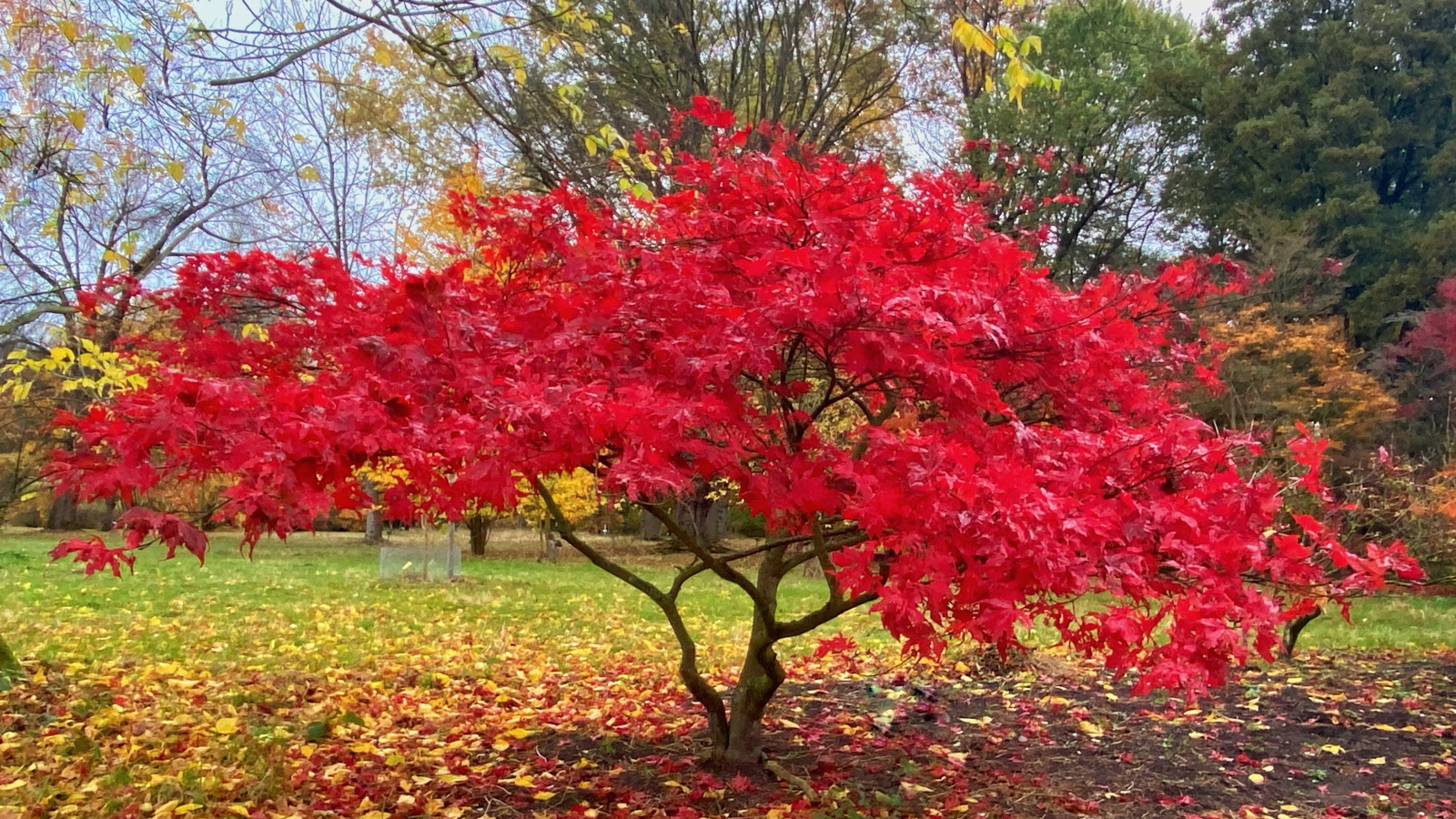

Trees are having something of a moment and are extremely on-trend. And it’s easy to see why.
They give shape and structure to the yard, creating height and a focal point. Pick the right variety, whether they are fast-growing trees or low maintenance, and you have year-round interest: blossom in spring, a shady canopy in summer, delicious fruits or colorful foliage in the fall, and an attractive skeleton on which to hang fairy lights and decorations for Halloween, Thanksgiving and Christmas.
They are also beneficial to the environment, taking in carbon and helping to reduce the risk of floods.
So, we are all planting trees - or planning too. But before we do, there are several things that need to be considered in order to avoid some massive pitfalls that could potentially kill your tree and even damage your home and yard.
Easy tree mistakes to make
When my family and I moved into our current home 12 years ago, the front and back yards were overplanted with large, dense trees. They blocked the light and diminished the soil, so within the first year we had taken many of them out.
Overplanting is an easy mistake to make when adding trees to a yard. Other pitfalls include choosing the wrong tree, buying too large a tree, planting at the wrong time of year and pruning incorrectly.
By following our top tips you can avoid these nine common tree mistakes, and your trees and yard will flourish as a result.
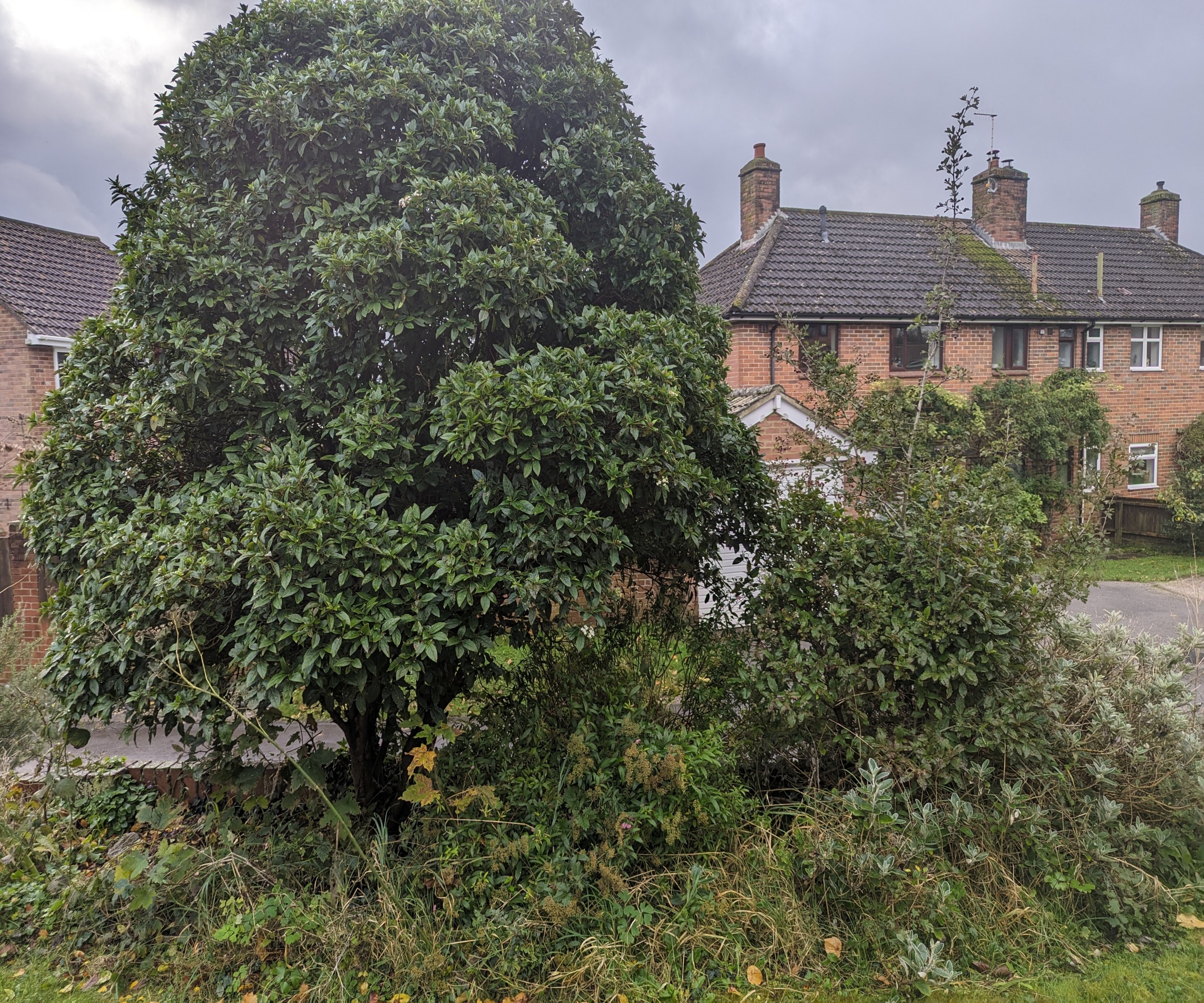
Overcrowded trees can fail to thrive in cramped conditions
1. Buying an unhealthy tree
Always buy the healthiest-looking tree in the garden center, and use reputable vendors when buying online.
A tree that looks sad before you get it in the soil is unlikely to thrive once it’s in your yard, where it will be contending with mixed weather conditions, pests and many other natural problems. If you are buying at a time when trees are in leaf, choose one with healthy, glossy foliage, avoiding those that are drooping or have dull leaves.
Lift its pot and check underneath. If there are roots growing through the holes in the base, choose another one. Pot-bound plants with roots that are wound around each other or stuck to the sides of their container can struggle to establish and spread their roots, even if you take the time to tease out the roots.
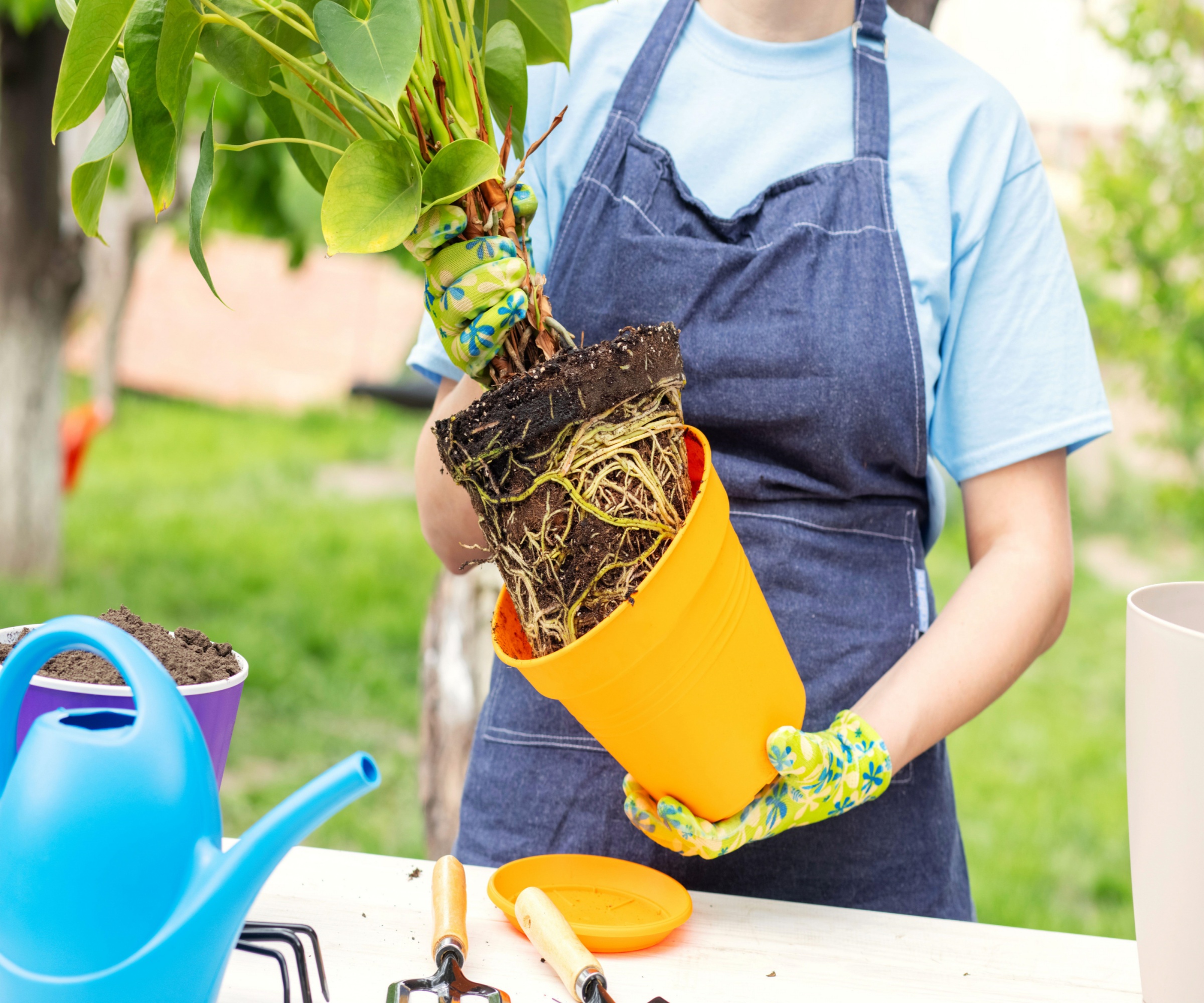
Avoid buying trees with roots that are circling themselves or growing out of the base of the pot
2. Planting in the wrong place
Give your new tree its best chance by planting it in the right spot - it sounds simple advice, but you would be amazed how many people get it wrong. Here are some things to watch out for and think about:
Soil type: Be aware of the soil type in your yard as trees have their preferences.
Most trees grow best in soil that has a neutral pH - if you are unsure, it is relatively easy to test the pH of soil and there are many easy-to-use kits available, such as this battery-operated soil meter by Raintrip on Amazon.
Many trees grow well in alkaline, chalky soil, especially fruit trees, oaks and beech. We garden on chalky soil and have two beautiful blossom trees, a cherry and an Amelanchier that produce a froth of wonderful color in spring.
If you have acid soil, azaleas, rhododendrons, pines, acers (Japanese maples), magnolias, birch and sweet gum (Liquidambar styraciflua) will thrive.
Sun or shade: Most trees will tolerate light and shade, but take care with acers as their unfolding leaves will be scorched and shrivelled by hot sun.
Wet ground: Although soggy land can be hard to garden with, there are many plants for wet soil including several trees: willows, alders and poplars.
Trees more suited to drier soil may find their roots rotting in constant wet, and their bark may also rot, creating an access point for pests and disease.
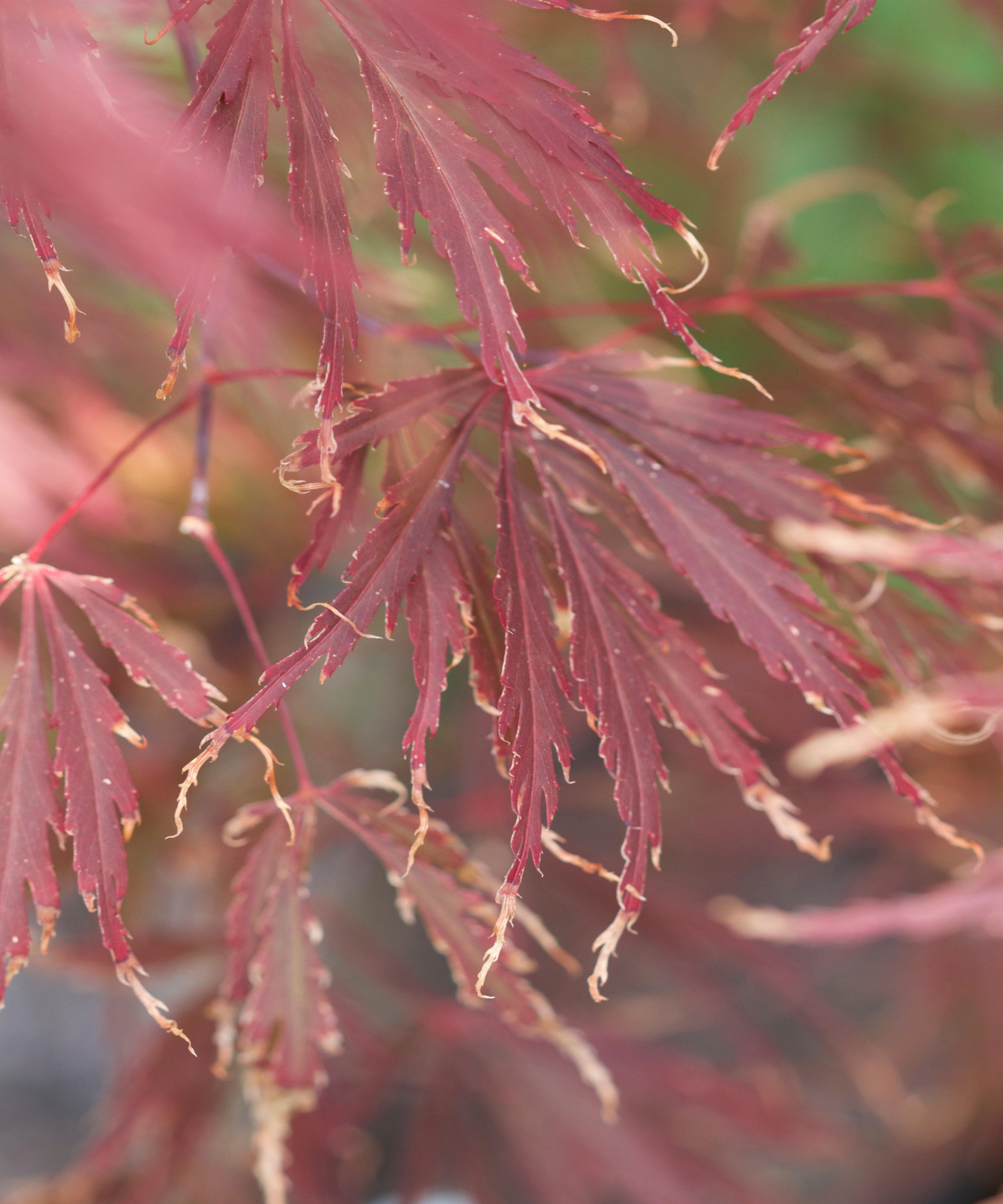
Leaves of a Japanese maple (acer) scorched by sun
3. Planting at the wrong depth
Trees won’t grow well if they are set in the ground too deeply or not deep enough, both of which are common planting mistakes.
When you buy your tree, take a close look at the bottom of its trunk where you will find a woody knobble or thickness. This is the graft area, and when planting, make sure this is set just above the soil.
An easy way of making sure you get this right is to lay a cane across the planting hole and plant your tree with its graft at the same level.
If you have already dug your hole you can add or take away soil and compost so you get the correct depth.
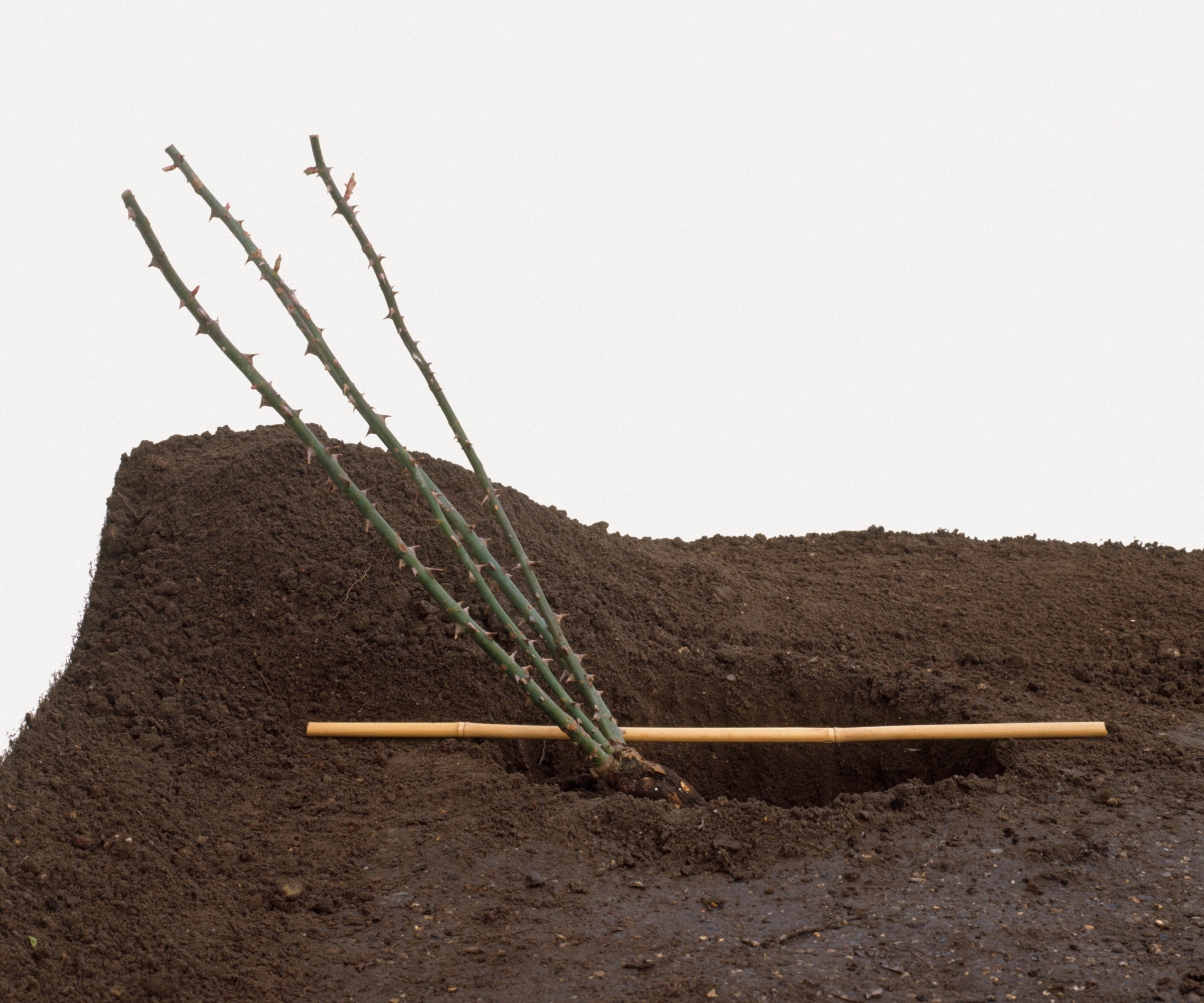
Lie a cane across the planting hole so you can set your tree at the correct depth
4. Insufficient watering
All plants need regular watering when they are first planted to lock soil and moisture around their roots and help them establish strongly.
Watering post-planting is even more critical for trees and they need a lot - around five gallons a week, especially if weather conditions are dry.
The easiest way of making sure your new tree isn’t going thirsty is to place a five-gallon bucket next to it with two holes drilled in the base. Fill it with water weekly and the moisture will steadily seep out and consistently keep your tree’s soil damp.
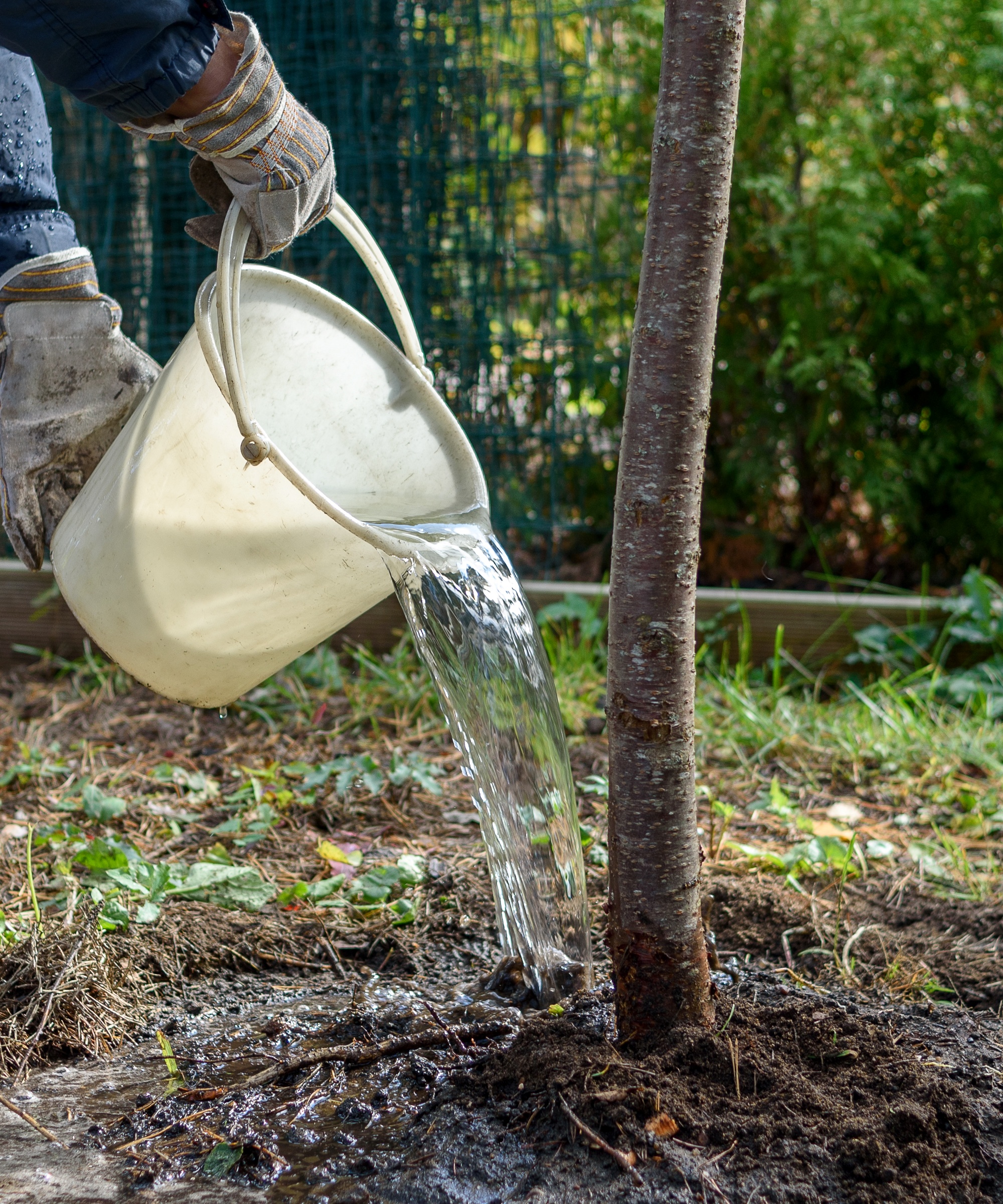
Newly planted trees should be watered generously, especially in their first year and during dry periods
5. Buying the wrong tree
Be ambitious with your tree planting, but be sensible when it comes to the number of trees you buy. Always consider how large they may potentially grow.
Try to do some research first and buy a tree that suits your yard. There is no point buying a variety with the potential to grow very large if you only have a small yard full of plants that like the sun - it will soon shade them out.
There are lots of excellent trees for small yards, so choose one of those instead. Likewise, if you have plenty of room to play with, buy trees that won’t look small and puny and get lost in the space.
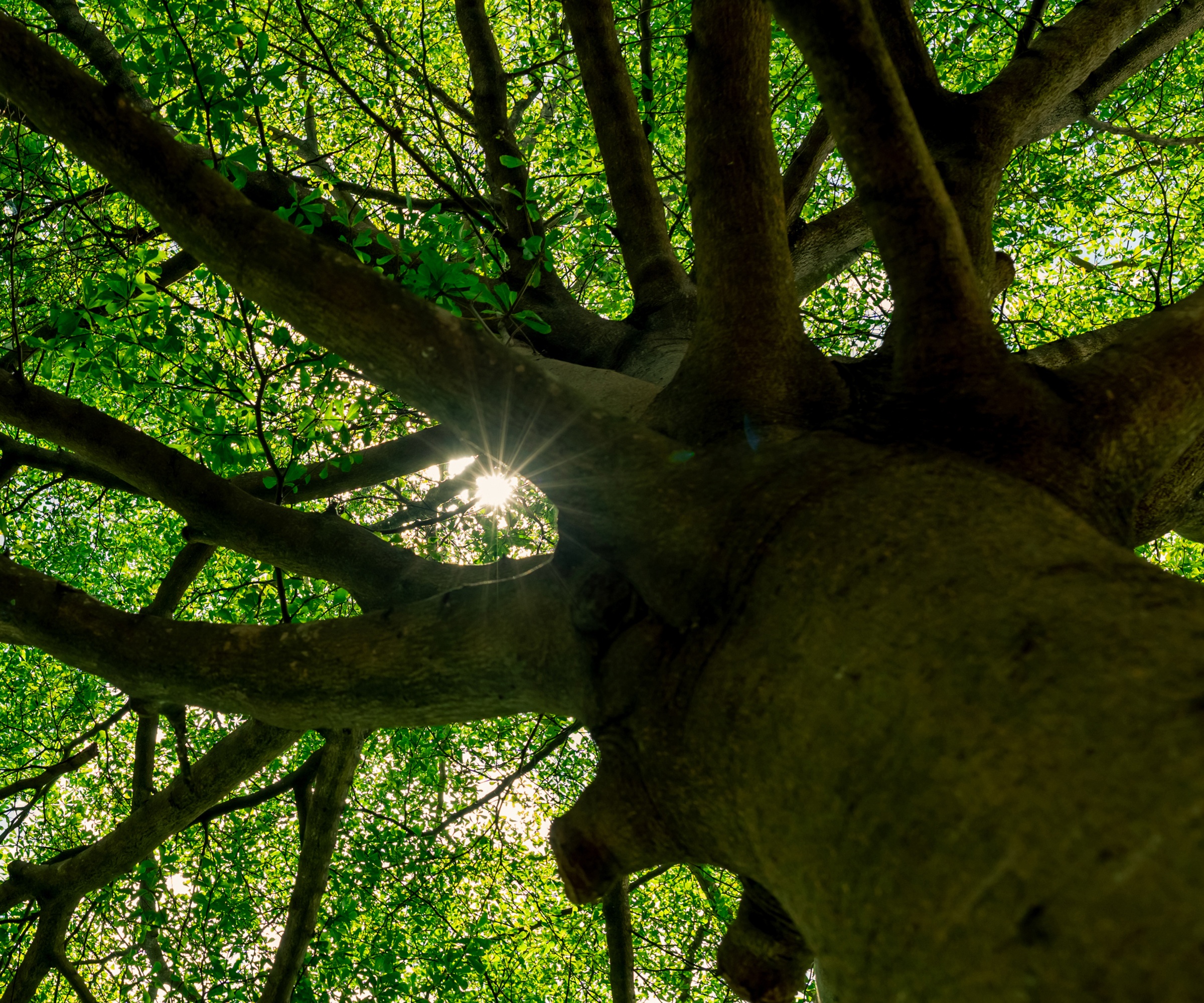
If you have a small yard, never buy a large tree as it will block all the sunlight and drain nutrients from the soil
6. Planting at the wrong time
There are no hard and fast rules about planting trees, but there are certain weather conditions that should be avoided.
Never plant when the ground is frozen, because the ground will be hard to work and dangerous to young roots. Waterlogged soil should also be avoided because the water drives oxygen from the soil which could 'drown' the roots of your tree and kill it.
Avoid planting on windy days as your new tree risks being battered, may have branches shredded or its slender trunk snapped in a strong gale.
To prevent wind damage to young trees, secure them to a stake that is set deeply in the ground on the side of the prevailing wind (the direction the wind usually comes from). We do this because the wind will blow the tree away from its support, preventing abrasive damage to its bark and helping strengthen its roots.
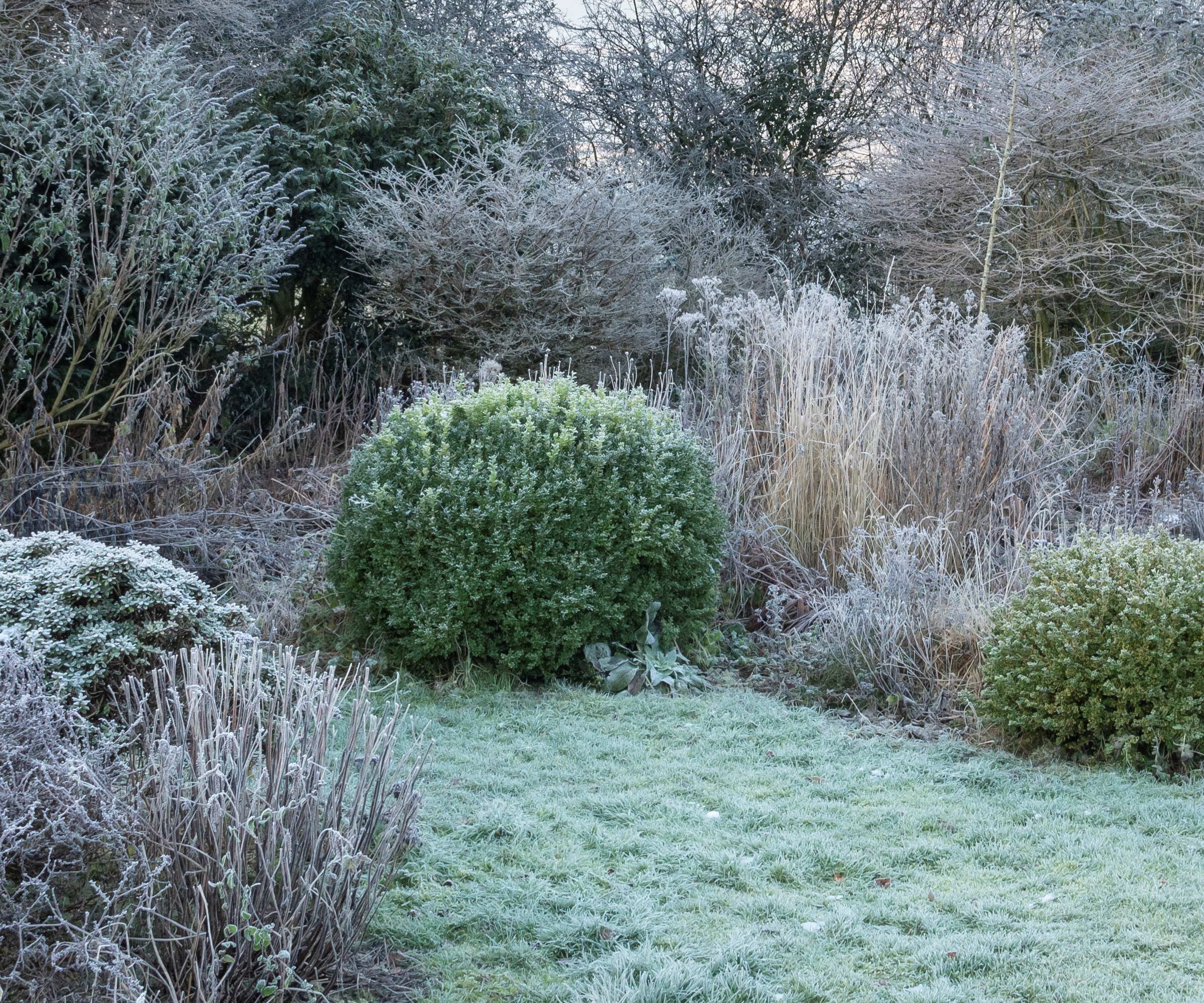
Never plant trees when the ground is frost-hard or waterlogged
7. Planting too close together
Trees need space to reach their full potential so avoid planting them too close together because they will be competing for light, moisture and food.
The exception is where you have the space to plant a small grove of slender, light-barked trees such as birches for an attractive effect, but even these should be spaced 5-10 feet apart so they can develop to their full potential.
If you are planting trees to form a hedge, make two or three rows with staggered planting and they will soon grow to form an attractive barrier.
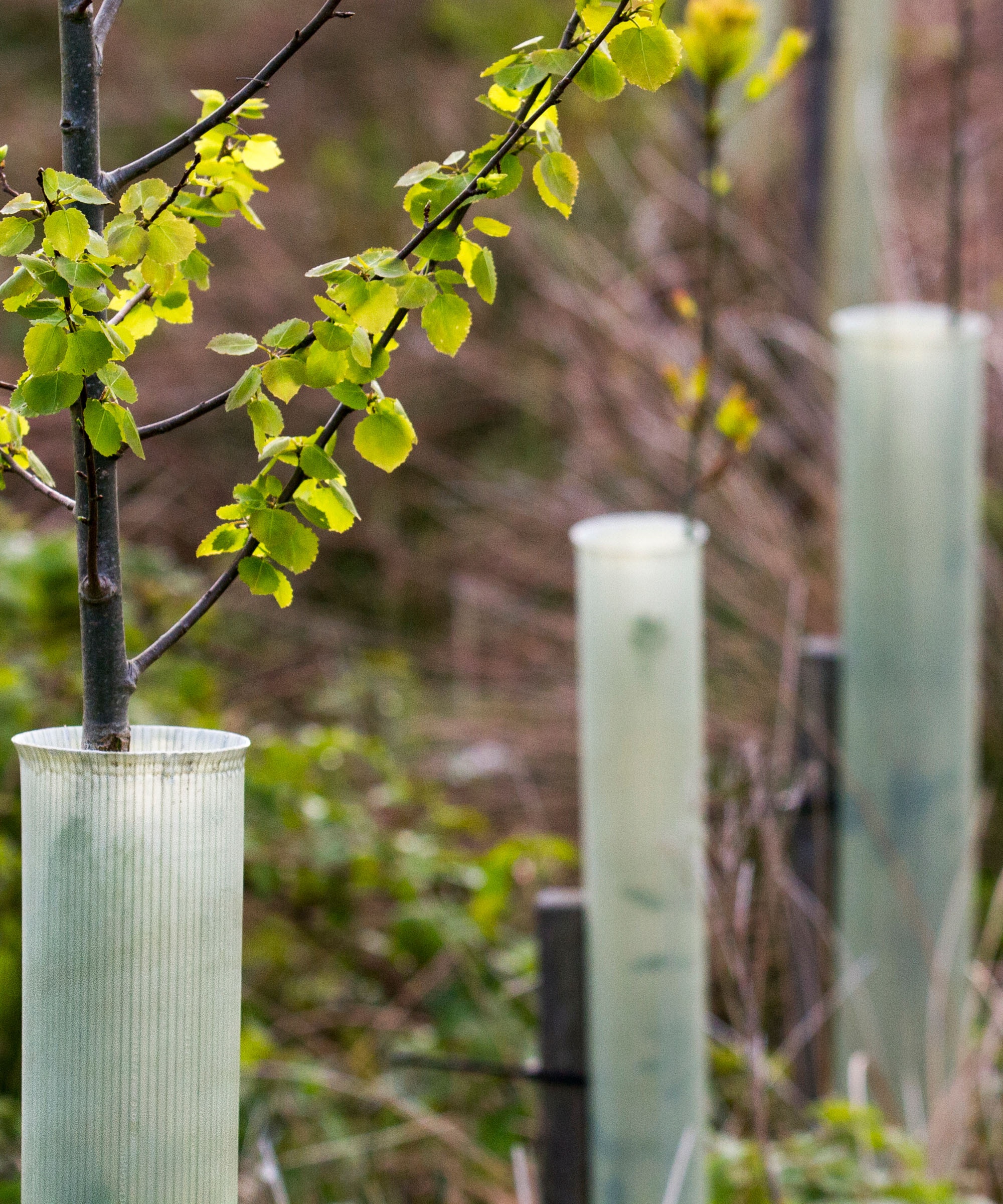
Avoid close planting as the trees will compete for water, light and food and won't reach their full potential
8. Incorrect pruning
Trees need pruning annually to stop their branches becoming congested, which stops light and air reaching the heart of the tree. This can stunt blossom and fruiting and also encourage fungal problems.
Most deciduous varieties are pruned when they have lost their leaves and are dormant, between the fall and early spring. If you cut into their branches while they are growing they will bleed sap, which can weaken them and leave them vulnerable to pests and disease.
The exceptions to this are plums and gages, ornamental and edible cherries, peaches, apricots and nectarine trees which should be cut back in midsummer. This is because they are susceptible to a fungal problem called silver leaf disease, which is most active between September and May.
Prune evergreen trees in summer too, because they are less hardy than their leaf-losing counterparts and if pruned in winter can suffer from frost scorch and dieback.
Whatever you are pruning, take it steadily and remember to 'look twice and prune once' to avoid the tree pruning mistake of taking off too many branches.
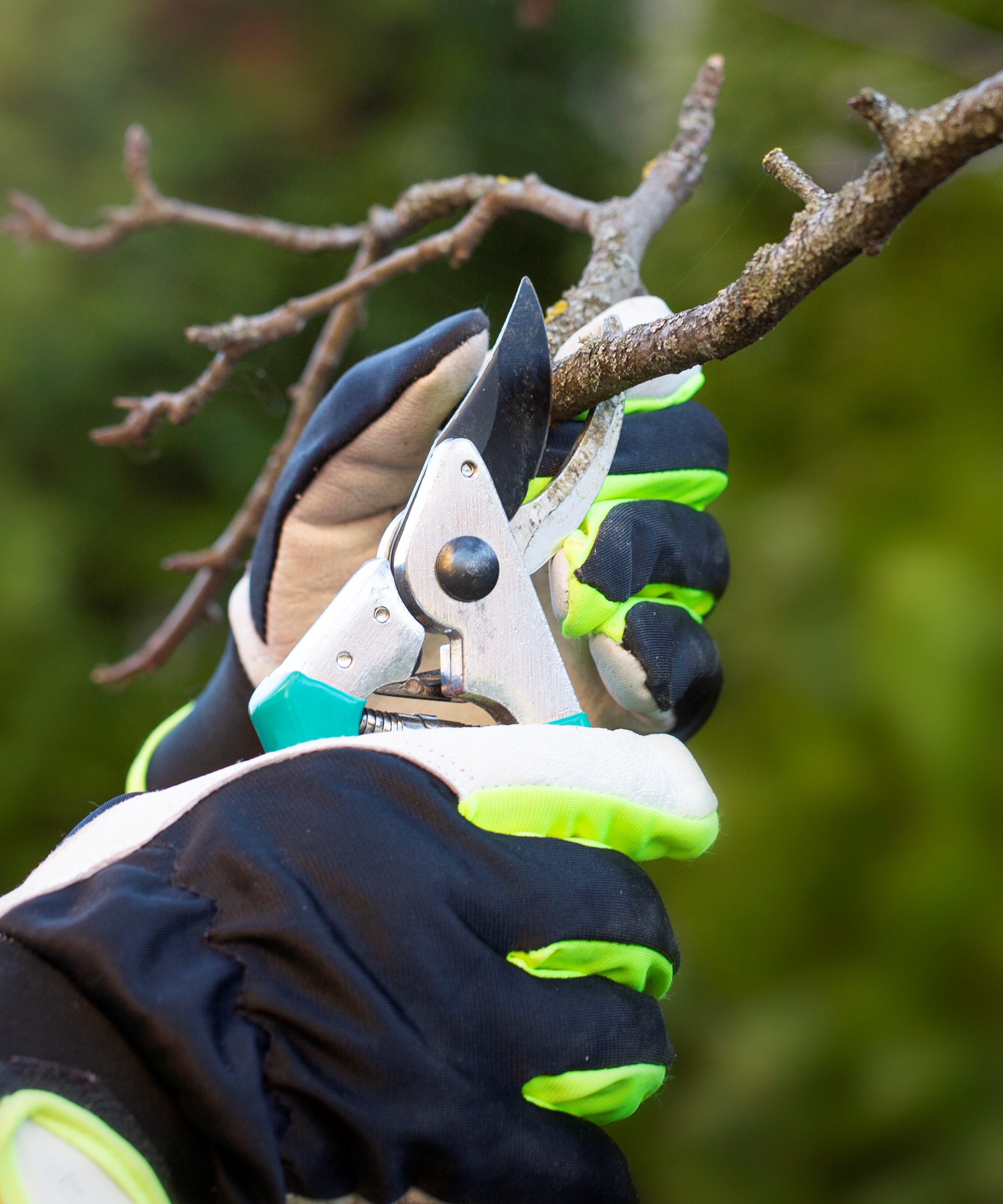
Prune at the right time of year using clean, sharp tools
9. Don't be sentimental
We all have favorite trees in our yards (mine is our ornamental cherry) but there may come a time when we mistakenly hang on to old, diseased or dangerous trees because we love them.
Never keep a tree that looks dangerous, unstable or has large unsafe branches spreading over sidewalks or roads. It may pose a dangerous threat to people or nearby properties if it falls or a branch breaks in bad weather.
If you have any doubts, get the opinion of a reliable tree surgeon and have your tree removed or pruned safely and professionally.
Another danger comes from potted Christmas trees. Very often people think it’s a good idea to plant them in the yard after their first festive season - little realising that this six foot cutie can grow into an 80-foot monster.
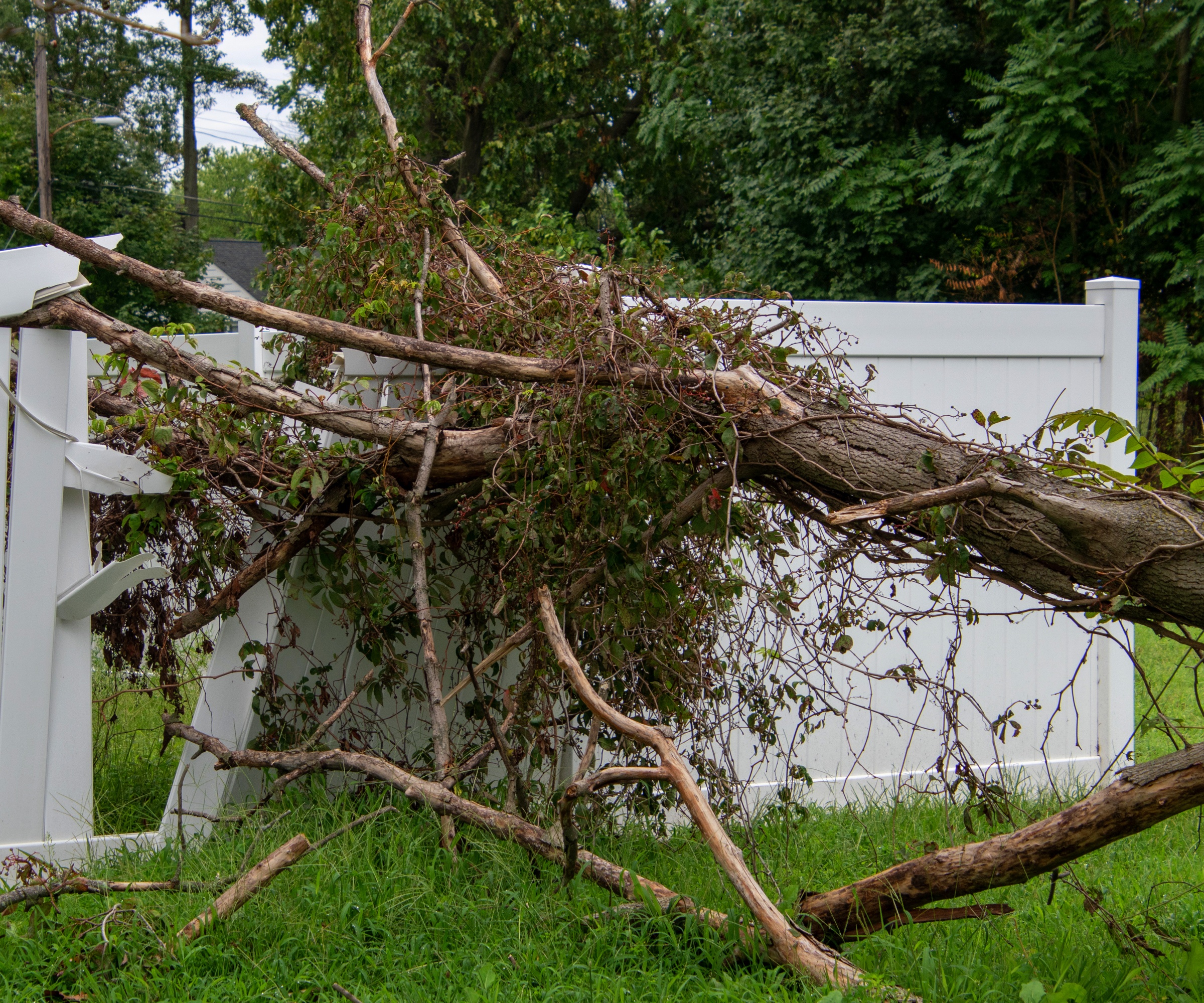
If a tree looks damaged and dangerous, have it removed or pruned before it can cause injury or damage
FAQs
Is mulching a good idea?
In the fall or spring after pruning, trees will benefit from a mulch with well-rotted manure, compost or shredded bark chippings.
However, always leave a 4in gap between the tree trunk and the start of the mulch as if it touches the bark it can soften it, causing peeling and offering an in-route to pests, disease and other problems - a common mulching mistake.
Will lawn grass damage my tree?
Trees look very attractive growing out of a lawn, especially in spring and summer if bulbs have been planted around them.
But grass can be a danger to young trees, so when you first plant, leave a 12in ring of bare soil around it because if the grass grows too close it will steal food and moisture from the soil and your young tree could fail to thrive.
Long grass growing against a tree trunk can provide a haven for pests and you risk damaging the tree when mowing right against it.
Fall is the perfect time to plant young trees as the soil is still warm from summer and dampened by showers. This is also the season for bare root planting, when young trees are lifted from the soil and sold with their roots wrapped in burlap, rather than in containers. This is a cheap and effective way of adding trees to your garden.
Spring is also a good time, when the soil is warming up again and your trees are ready to put on a surge of new growth.
Sign up to the Homes & Gardens newsletter
Design expertise in your inbox – from inspiring decorating ideas and beautiful celebrity homes to practical gardening advice and shopping round-ups.

Ruth is a Contributing Editor for Homes & Gardens, and formerly Gardening Editor of Amateur Gardening magazine. She is horticulturally trained, with a qualification from the Royal Horticultural Society. Her work for Amateur Gardening, the world's oldest weekly gardening publication, involved matching gardening tasks with each season, covering everything from sowing and planting, to pruning, taking cuttings, dealing with pests and diseases and keeping houseplants healthy. She is an expert in ornamental plants and edible crops, and everything she writes about and photographs is in her own garden, that has been a work in progress since her family moved there in 2012.
-
 How to grow astilbe – expert advice on cultivating this shade-tolerant flowering perennial
How to grow astilbe – expert advice on cultivating this shade-tolerant flowering perennialShade-tolerant and pest-resistant - astilbe are hardy and tough perennials that can thrive in many settings
By Ellen Wells Published
-
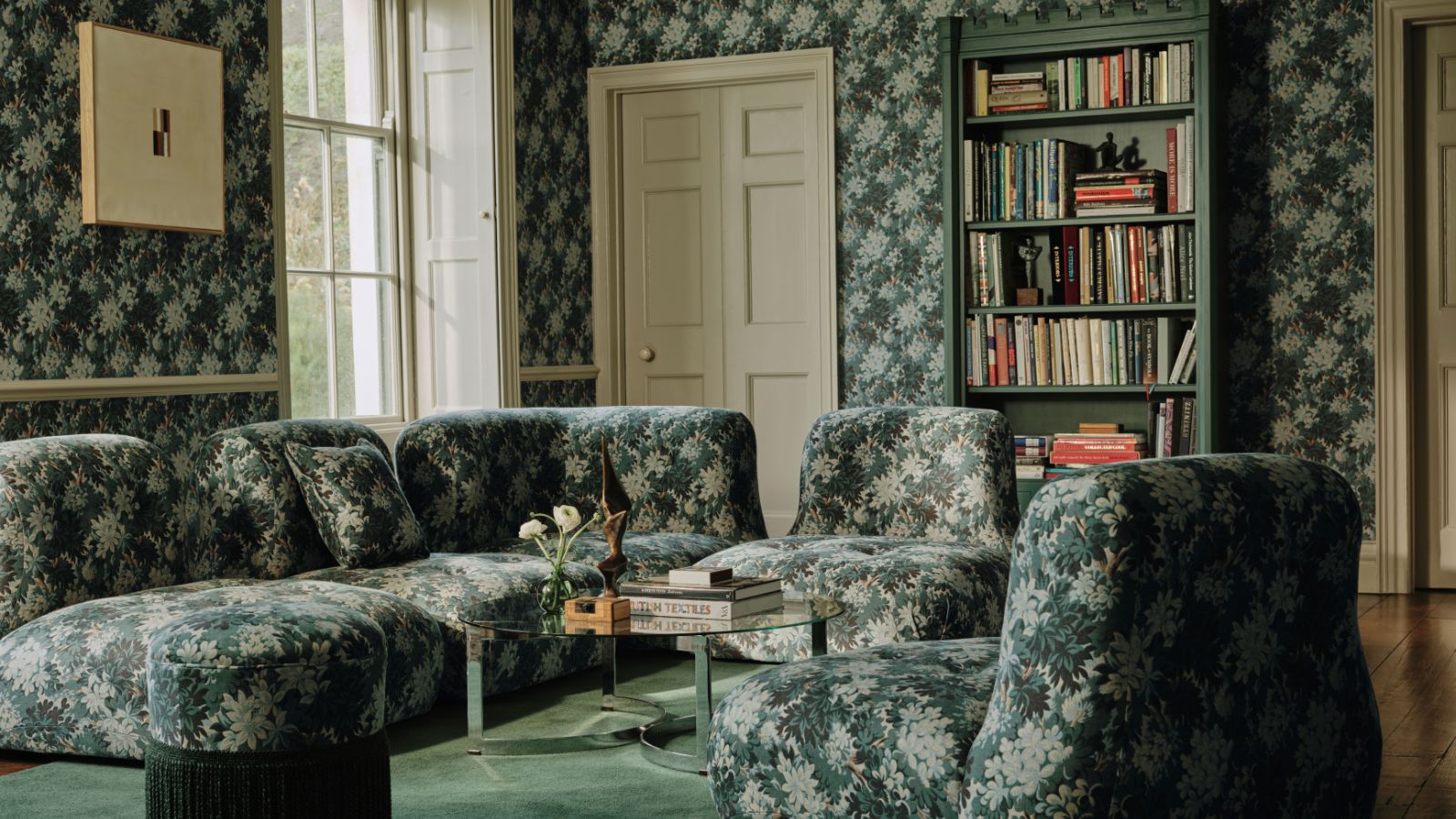 Vintage prints are making a comeback – designers say to look out for these 5 nostalgic patterns this year
Vintage prints are making a comeback – designers say to look out for these 5 nostalgic patterns this yearThese vintage-style patterns are all the rage right now, and we spoke with design experts to learn how best to style them in the home
By Eleanor Richardson Published